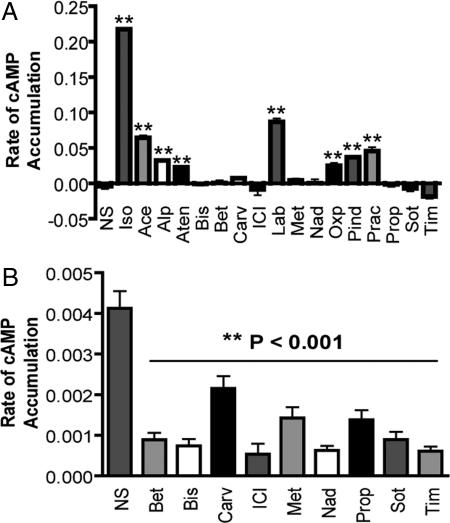Fig. 1.
cAMP responses monitored by ICUE2. HEK-293 cells stably expressing β2AR and the cAMP biosensor ICUE2 were treated for 2 min with a panel of ligands described as β2AR antagonists. (A) cAMP agonism was measured as the rate of change of the ICUE2 FRET ratio corresponding to the rate of cAMP accumulation. Ligands that did not induce cAMP generation were tested for inverse agonism in the same cells. (B) These cells exhibit constitutive β2AR activity that, although too weak to generate high basal cAMP, causes a rapid increase in cAMP when phosphodiesterases are inhibited with isoxybutylmethylxanthine (IBMX). This effect is receptor-specific, because there is no IBMX-induced cAMP increase in cells lacking overexpressed receptor (data not shown). We measured inverse agonism by pretreating cells with ligand for 5 min and quantifying the rate of cAMP increase for 30 sec after IBMX treatment. Inverse agonists are those ligands that do not stimulate cAMP accumulation on their own and decrease the rate of IBMX-induced cAMP accumulation caused by constitutive receptor activity. Data represent mean ± SE from five independent experiments. **, P < 0.001 vs. nonstimulated cells (NS).

